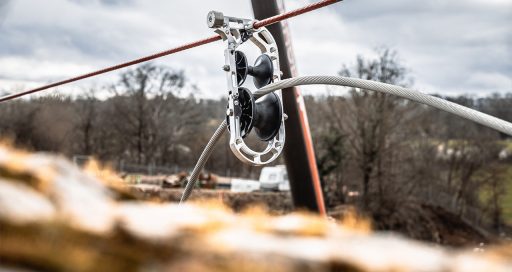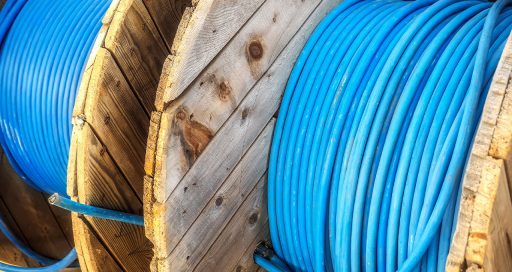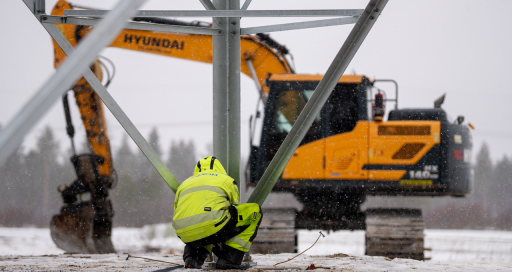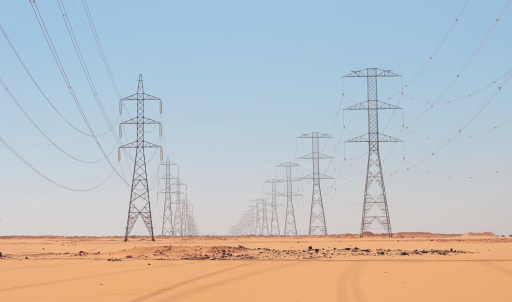To make the installation of high-voltage lines safer, Omexom Germany and its two partners, Seilflechter and Sepa-Tech, have designed an innovative new pulley-based support catenary system.

The construction of new overhead transmission lines and the replacement of conductors are complex operations. The on-site environment often necessitates spans several hundred metres long where the structures have to pass over rivers, roads or buildings.
Catenary systems currently available on the market do not always provide optimal safety. Omexom Transmission Germany, the VINCI Energies business area specialising in transmission infrastructure, set itself the goal of enhancing safety during the installation of these lines.
“Traditional systems use roller blocks, where the catenary rope is fixed outside due to clamps and fixed with wing nuts,” explains Michael Erspamer, Technical Director for transmission lines at Omexom Germany. “This means that the force with which the block is fixed to the catenary rope can only be estimated. If a conductor should break, the roller blocks are subjected to huge forces, and the clamping points can break, letting the blocks and conductors fall to the ground.”
An innovative solution already used on two large-scale projects in Germany
Another problem of traditional system concerns the catenary rope. Often were used braided hollow ropes as catenary ropes. These ropes must not be used near live circuits due to the danger of induction (a damp or dirty rope can burn out due to the induction). As an alternative, steel ropes must be used as catenary ropes, which are heavy and uncomfortable to handle during the assembly process.
Inspiration from New Zealand
In partnership with Seilflechter, a specialist in dedicated high-strength ropes, and SepaTech, a manufacturer of special equipment, Omexom Germany found the root of a solution on the other side of the planet.
In New Zealand to be precise, where technicians tend to use a pulley-based support rope system. Having optimised the solution from New Zealand, after 18 months of development, the three partners unveiled a new system they call the “OSS Catenary System”.
The rope problem was resolved by using ropes made from Novoleen. Novoleen is a high-strength fibre, in the high-strength range. And this rope has now been additionally treated and coated with a plastic layer, a PPO layer. This product has 3 tons of safe working load x 7, which is 21 tons of breaking load. “These are the required results you need in overhead line construction for synthetic pulling ropes and also catenary ropes” says Michael Erspamer.
A proven system
The OSS system allows insertion of the catenary rope into the body of the roller block without the need for tools. “Thanks to the asymmetric weight distribution, all the roller blocks are at the same angle,” explains Michael Erspamer. “With axial spacers fitted at fixed intervals along the catenary rope, the distance between roller blocks is perfect. This saves time and facilitates the catenary system installation.”
Five sequences of testing and simulations in extreme situations helped make the system more reliable; it has been used on two large-scale projects in Germany: construction of the new 380 kV line between Birkenfeld and Ötisheim for the power supply network operator TransnetBW; and an refurbishment of a 380 kV line for another German TSO.
03/14/2024





